PVC panels
Extruded PVC - a budget alternative to expensive tiled apron... It is flexible and does not impose any special installation requirements: you can fix the panels with your own hands, without spending a lot of time.
Also, the products do not impose special requirements on the wall surface. Unfortunately, most panels have a short lifespan, and they are not resistant to chemicals and high temperatures and can fade.
To avoid their deformation, you should choose a material marked with heat and moisture resistance.
PVC aprons come in two formats: in the form of a solid sheet or strips (lining). The panels are sold with a ready-made design - in the form of tiles, mosaics, bricks, with drawings and imitation of various textures. According to the type of coating, they are divided into matte and glossy (the second option is more resistant to washing). Installed on liquid nails or screws.
Read also: Plastic kitchen apron: types and design options
Laminate
The use of a laminate instead of an apron is justified by the high performance properties of the coating. It is easy to install, easy to care for, and even after a few years it does not lose its attractive appearance.
An apron made of laminate will be cheaper than an apron made of ceramic tiles, besides, it will add comfort to the kitchen - wood and its imitation never go out of fashion and successfully fit into most styles.
To make the laminated apron perform its functions longer, choose moisture-resistant panels of the 31st and 32nd class and treat the seams with special glue. The only drawback of the material is its poor resistance to high temperatures.
Glass
It is an absolutely environmentally friendly material widely used in interiors. To protect the kitchen wall, ordinary glass will not work: only tempered glass will withstand the heat from the stove. Glass apron not afraid of water, easily cleaned of fat, does not absorb odors.
Transparent material gives the kitchen lightness, fits perfectly into minimalism, loft and modern style. It can be colored or transparent. Suitable for small kitchens, since thanks to the unobtrusive reflective effect increases space... Indispensable when you need to protect an unusual or unstable coating.
Disadvantages: inability to drill additional holes.
Wallpaper
The main advantages of an apron from wallpaper are ease of pasting and a huge selection of colors. It is better to use moisture-resistant canvases as a material, which will last longer than paper ones. This is ideal for those who want to decorate the kitchen, bringing its design closer to the living room, and those who do not cook much.
Another practical solution - commercial vinyl wallpaper. Unfortunately, even the most stable canvases will not withstand drops of fat on the surface, as well as constant temperature changes.It is not easy to care for such an apron, because you cannot rub it with a hard and wet sponge.
To protect the wallpaper from the effects of cooking, it should be varnished or covered with a removable glass panel, and, if desired, changed.
Window
Installing a window instead of a kitchen backsplash in a private house will give the kitchen a unique style and add more light. Installation of a window is associated with some difficulties, therefore, requires the utmost precision and care from the wizard.
It is important that the window opening is flush with countertop, and also did not rise too high, because lockers should be hung over it. Users who have a window instead of an apron appreciate this option for originality, convenience, and easy maintenance. Not suitable for those who love privacy.
Decorative plaster
The way to decorate the apron zone can be exquisite or, on the contrary, rude. Venetian plaster looks harmonious in classic style, and the concrete coating is in the loft, and the rougher apron material, the more expensive furniture and fittings should be. Decorative plaster has high strength and durability. The main thing is to choose a composition that is not afraid of moisture, and varnish the finished apron.
The only difficulty is that an overly embossed surface is difficult to wash.
Paint
This inexpensive material gives unlimited possibilities when choosing the color of the apron, because the composition can be tinted in any color. Purchase paint that can be washed with household chemicals and wiped frequently - then the coating will last a long time. Leave some of the paint on so the apron can be repaired if necessary.
The main requirement for a wall to be painted is a perfectly flat surface.
Decorative rock
Suitable for aesthetes and connoisseurs of brutal textures. Natural stone is the most durable, but it has a high cost. More affordable option – artificial agglomerate, as well as colored concrete that imitates shell rock.
In addition, the apron can be laid out from budget plaster tiles "like a stone" or "brick", but their embossed and porous surface must be protected with varnish or glass. You can lay such an apron yourself.
Self-adhesive film
Another inexpensive way to keep drips off the wall. The film is sold in various colors, is easy to stick and can withstand several years of use. High-quality material is not afraid of sunlight and tolerates washing with soapy water.
But if the wall in front of the cladding has not been leveled and sanded, self-adhesive will make the defects even more noticeable. Also, before gluing, you must thoroughly wash and degrease the surface.
Important: The film is easily removable, but often leaves behind an adhesive layer.
Slate
Painting a kitchen apron with black chalk paint is not only practical, but also an original option. The wall will be easy to clean, as the blackboard paint is resistant to long-term external influences. On the apron, you can draw, leave notes, write menus and recipes.
The surface must be leveled before painting. The composition should be applied in three layers to achieve an even coating. One liter is enough to cover a two-meter apron in two layers.
There are many ways to design a kitchen apron - they all have their advantages and disadvantages. Before choosing a material, you should consider your financial capabilities, as well as cooking methods and the presence of a dishwasher. People who rarely use sink and a stove, they can not worry about the operational properties of the apron and show their imagination without limiting themselves.


 10 practical tips for arranging a small kitchen in the country
10 practical tips for arranging a small kitchen in the country
 12 simple ideas for a small garden that will make it visually spacious
12 simple ideas for a small garden that will make it visually spacious
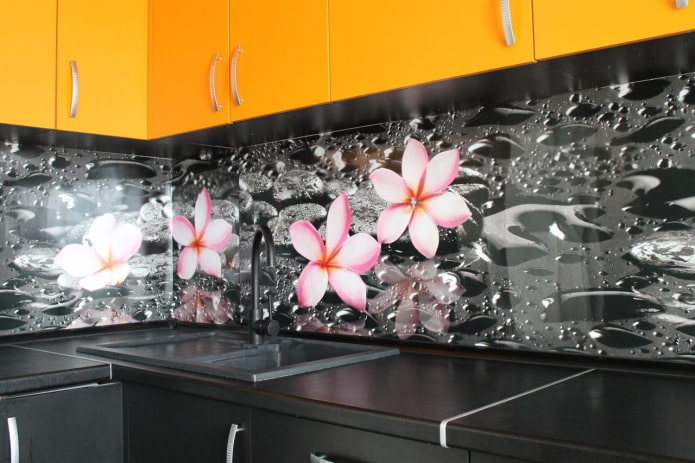
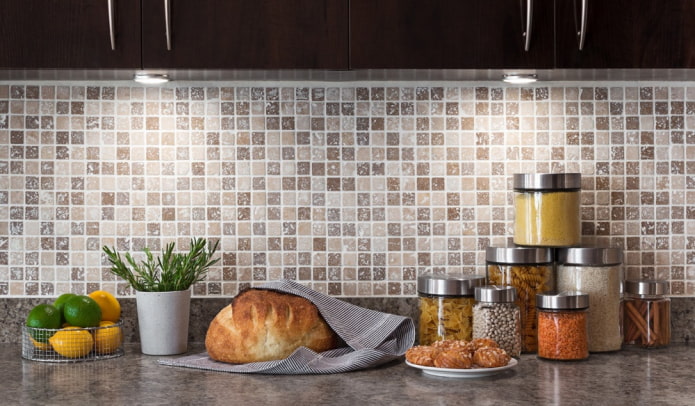
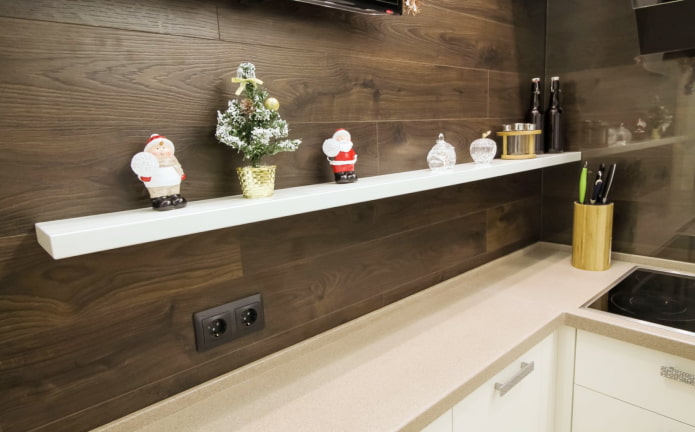
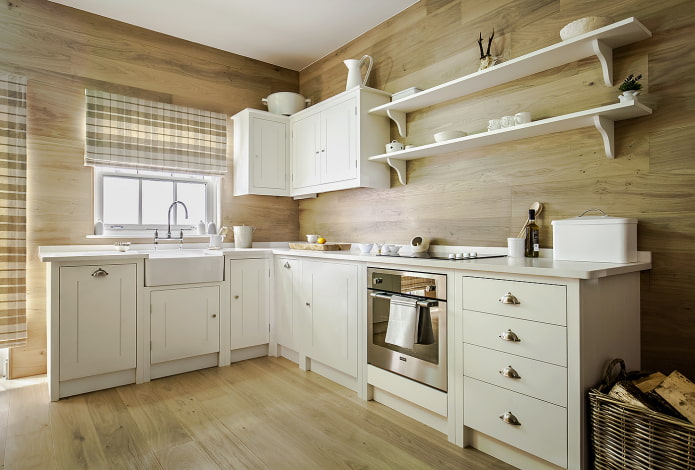


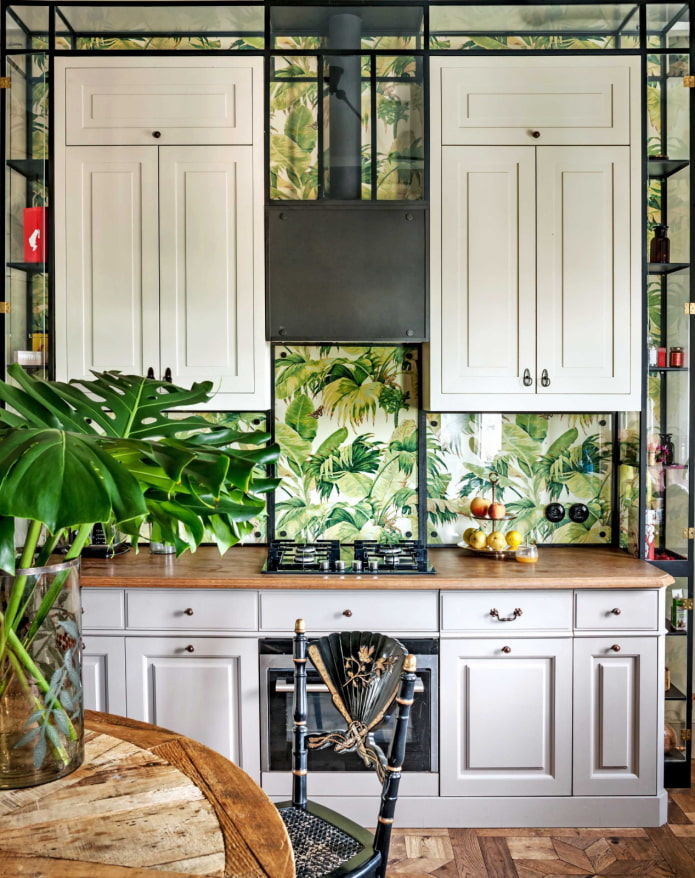
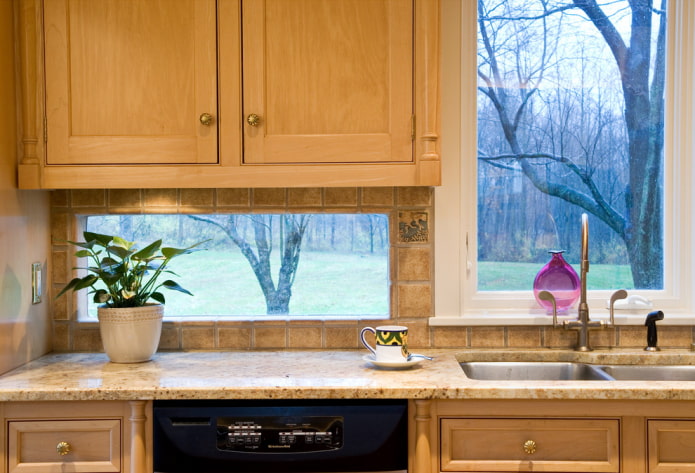
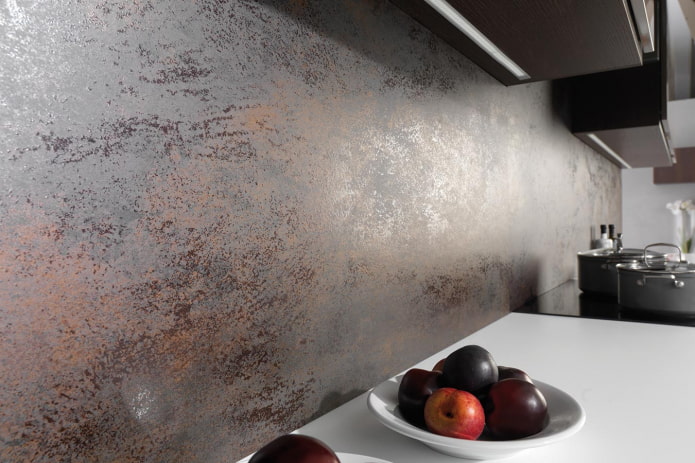
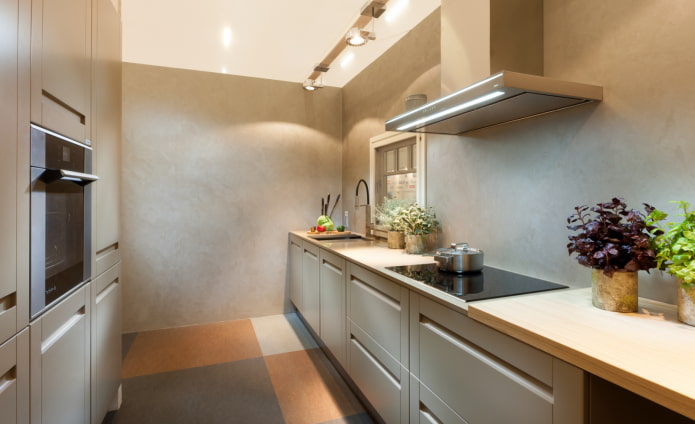
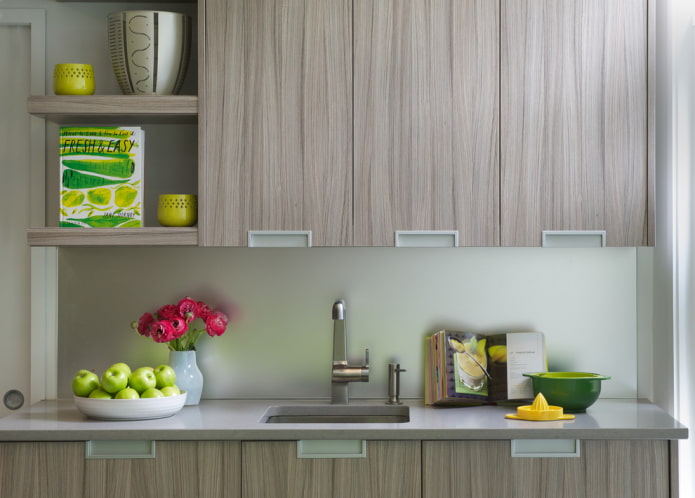
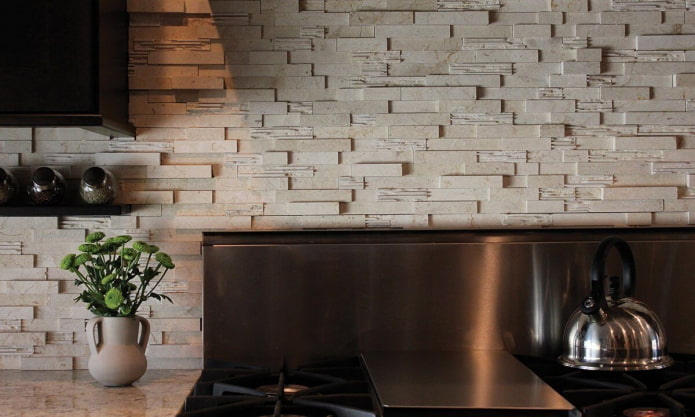
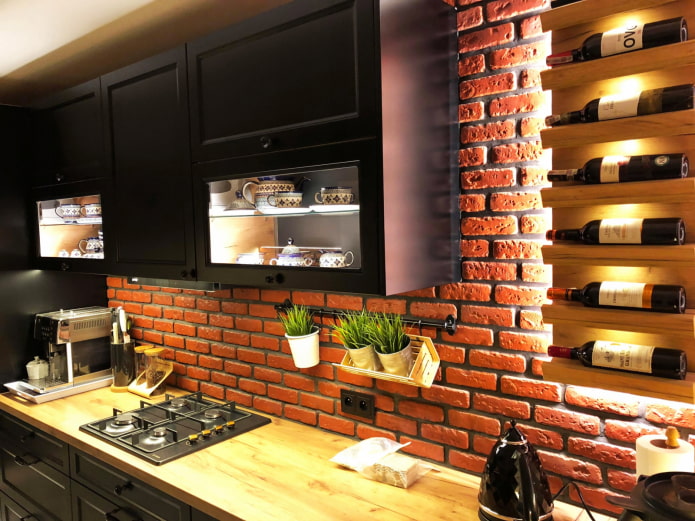
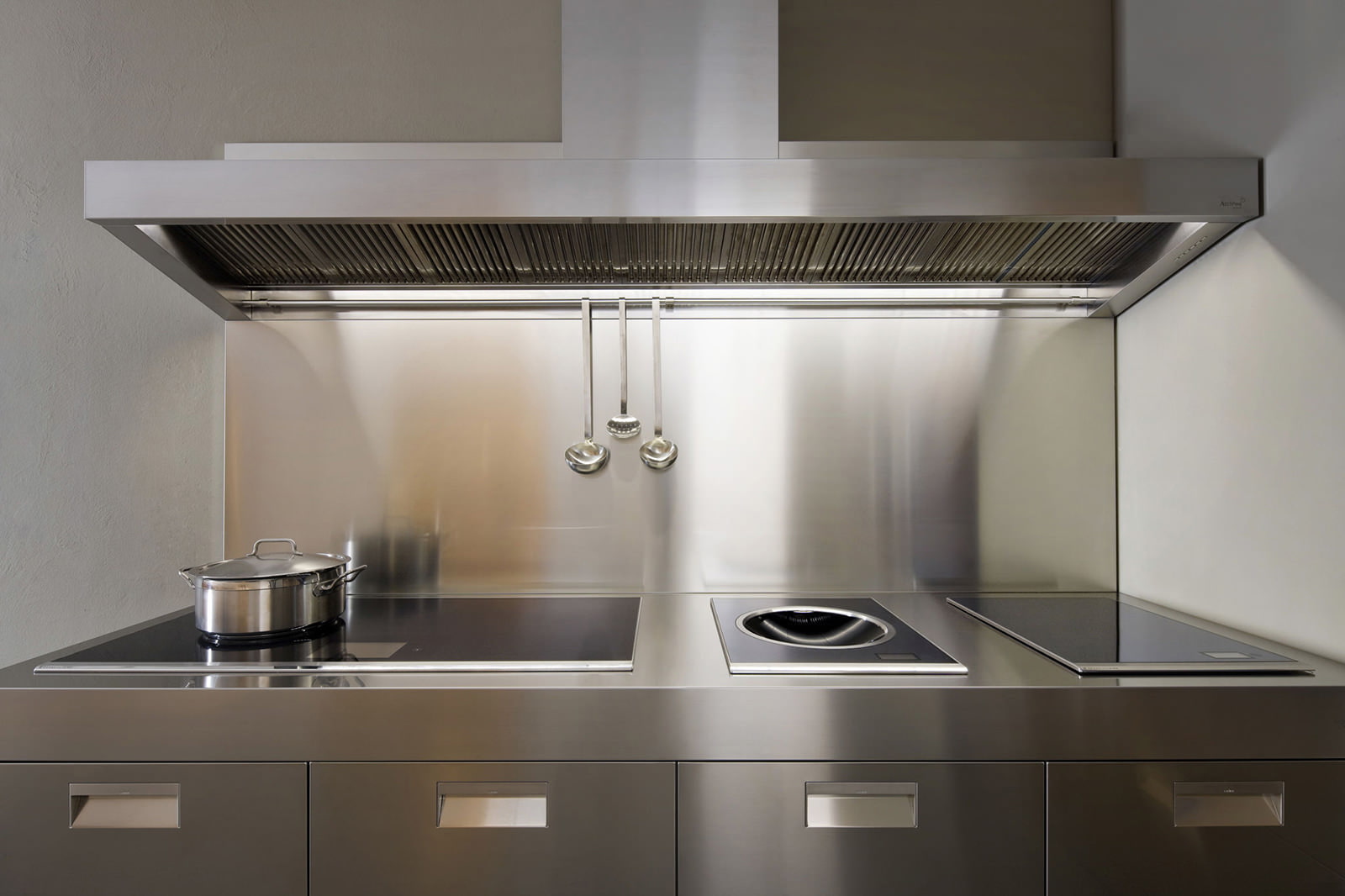

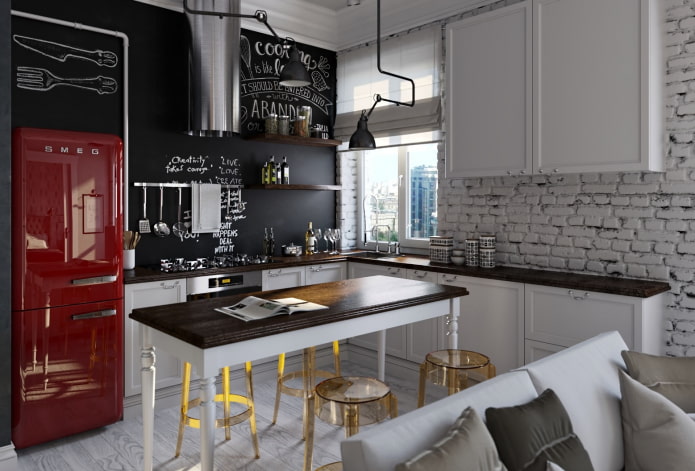
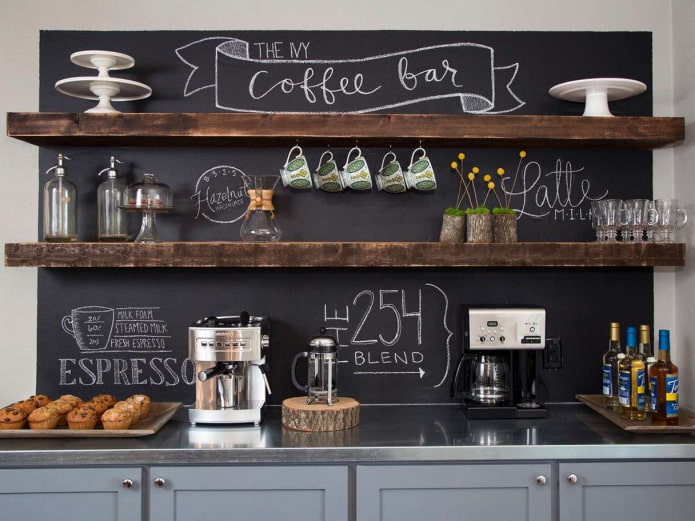

 How to choose the color of your kitchen sink?
How to choose the color of your kitchen sink? White kitchen set: features of choice, combination, 70 photos in the interior
White kitchen set: features of choice, combination, 70 photos in the interior Black set in the interior in the kitchen: design, choice of wallpaper, 90 photos
Black set in the interior in the kitchen: design, choice of wallpaper, 90 photos How to choose curtains for the kitchen and not regret it? - we understand all the nuances
How to choose curtains for the kitchen and not regret it? - we understand all the nuances Design of a white kitchen with a black countertop: 80 best ideas, photos in the interior
Design of a white kitchen with a black countertop: 80 best ideas, photos in the interior Kitchen design with green wallpaper: 55 modern photos in the interior
Kitchen design with green wallpaper: 55 modern photos in the interior